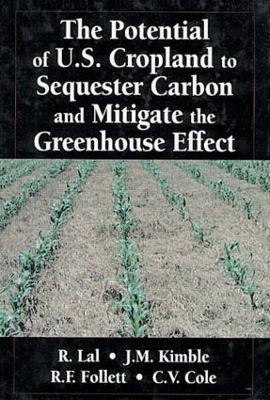This report assesses the potential of U.S. cropland to sequester carbon, concluding that properly applied soil restorative processes and best management practices can help mitigate the greenhouse effect by decreasing the emissions of greenhouse gases from U.S. agricultural activities and by making U.S. cropland a major sink for carbon sequestration.
Topics include:Describe the greenhouse processes and global tends in emissions as well as the three principal components of anthropogenic global warming potential
Present data on U.S. emissions and agriculture's related role
Examines the soil organic carbon (SOC) pool in soils of the U.S. and its loss due to cultivation
Provides a reference for the magnitude of carbon sequestration potential
Analyzes the primary processes governing greenhouse gas emission from the pedosphere
Establishes a link between SOC content and soil quality
Outlines strategies for mitigating emissions from U.S. cropland
Discusses soil erosion management
Assesses the potential of using cropland to create biomass for direct fuel to produce power
Details the potential for sequestering carbon by intensifying prime agricultural land
The Potential of U.S. Cropland to Sequester Carbon and Mitigate the Greenhouse Effect provides an exceptional framework for the adoption of science-based management methods on U.S. cropland, encouraging appropriate agricultural practices for the sustainable use of our natural resources and the improvement of our nation's environment.
- ISBN10 157504112X
- ISBN13 9781575041124
- Publish Date 1 August 1998
- Publish Status Active
- Publish Country US
- Publisher Taylor & Francis Inc
- Imprint CRC Press Inc
- Format Hardcover
- Pages 144
- Language English
